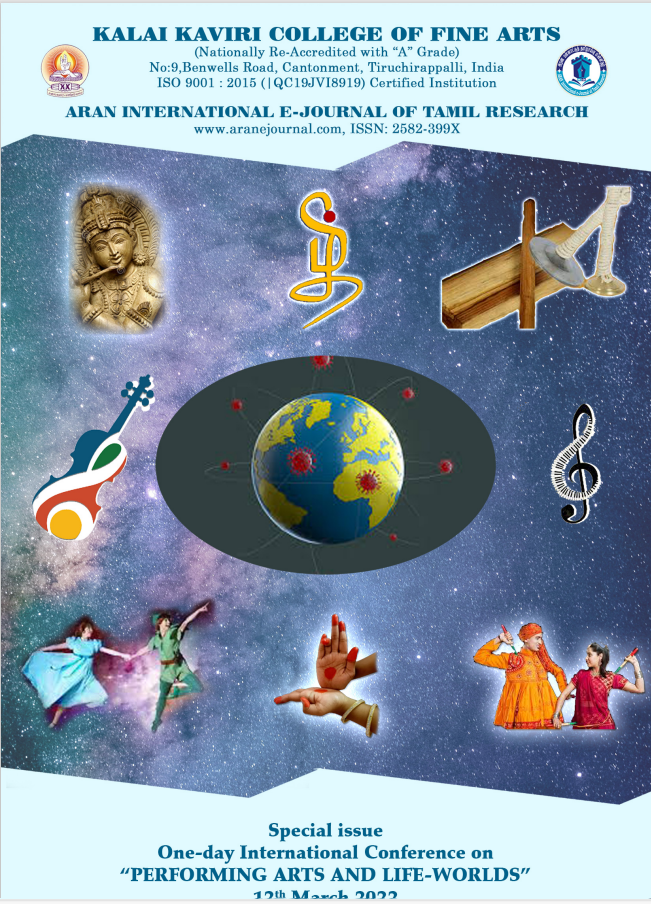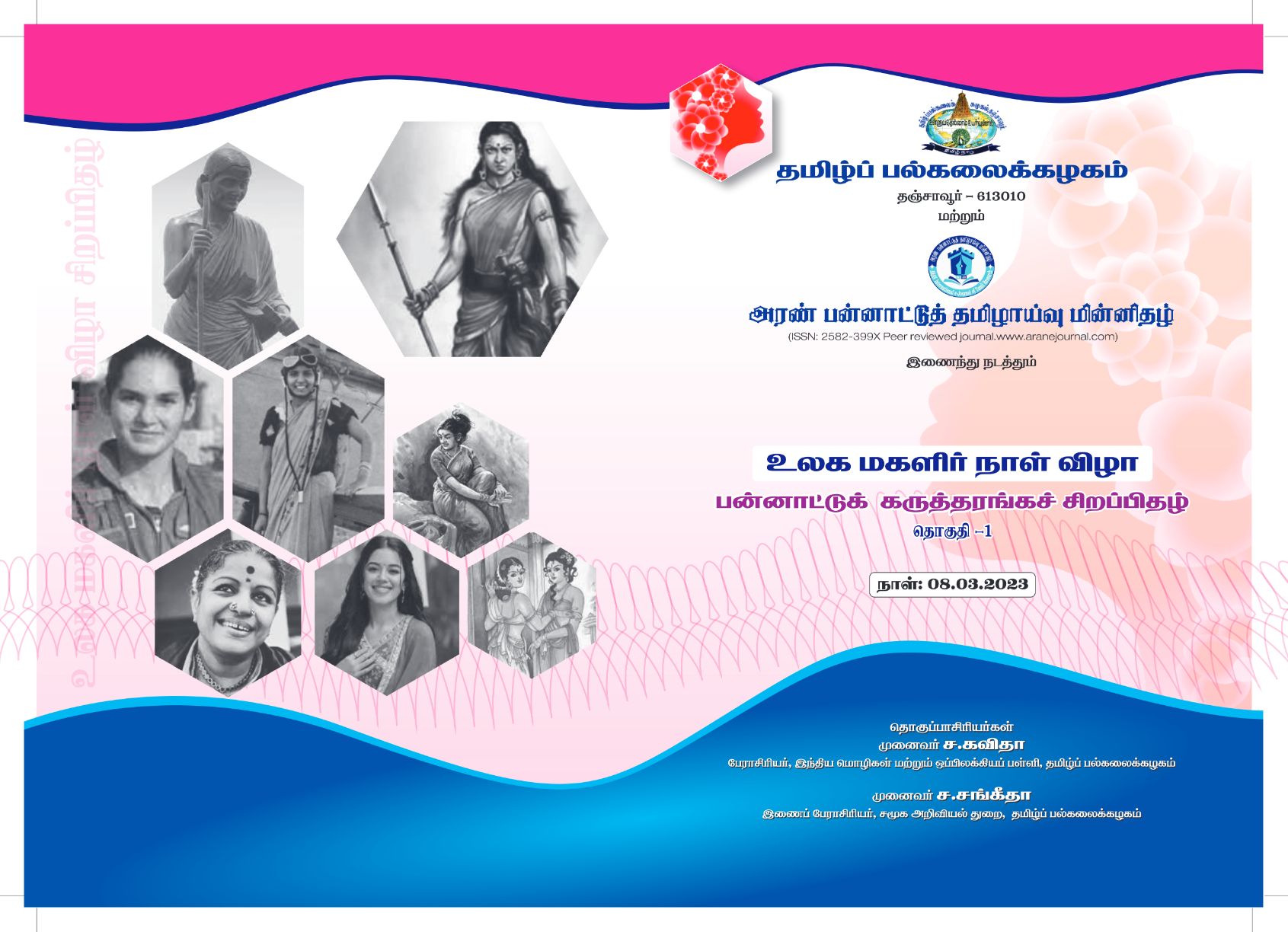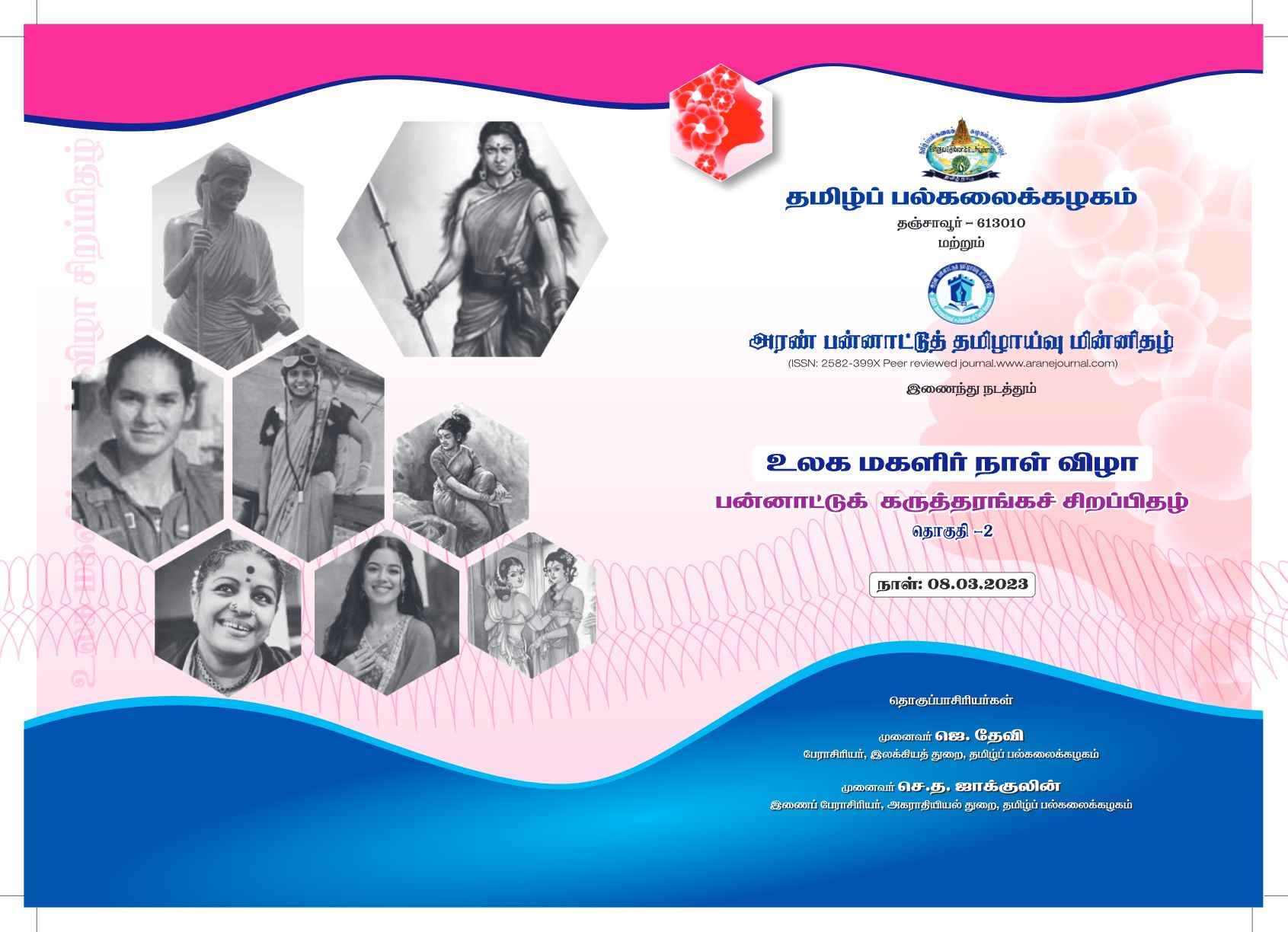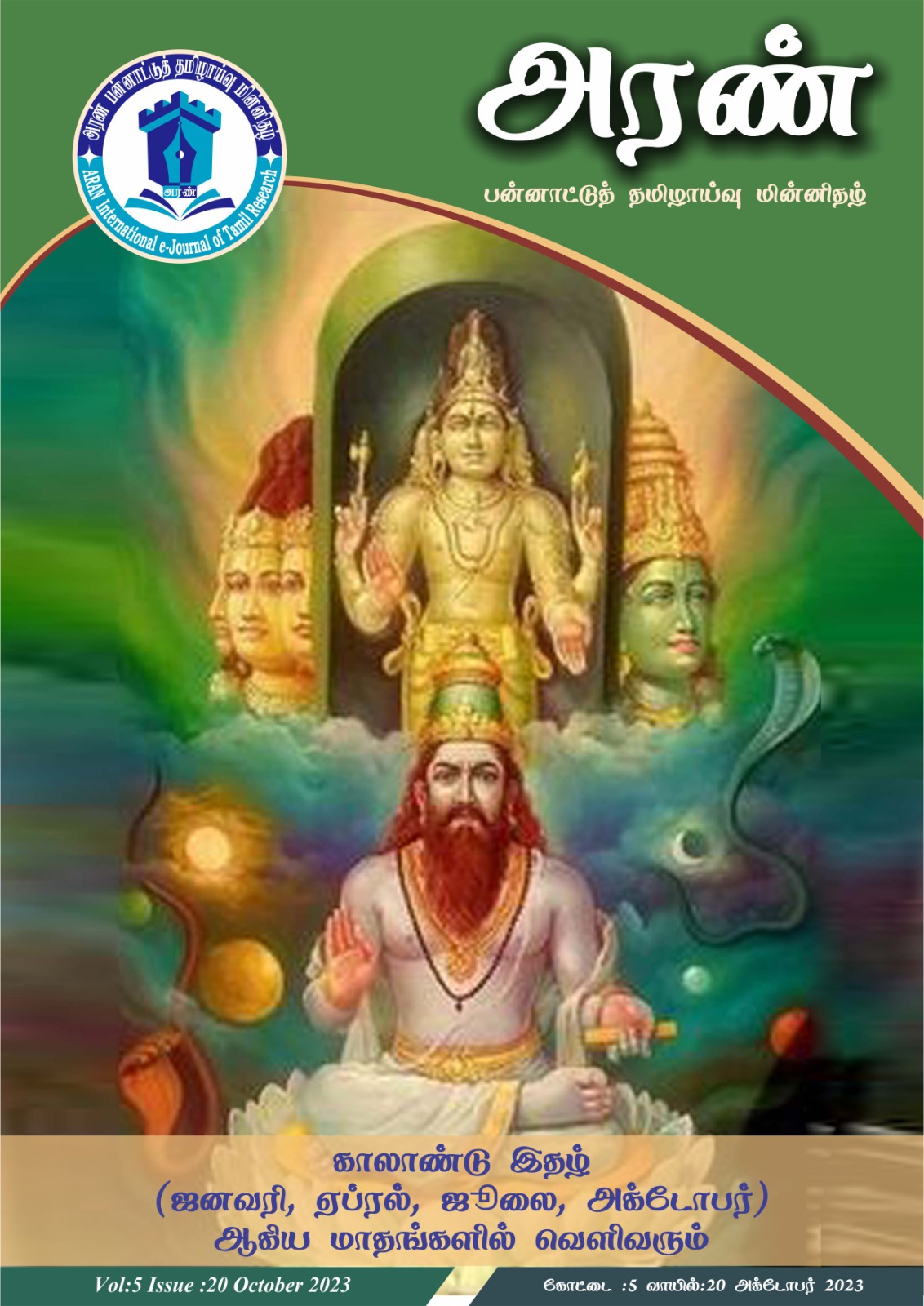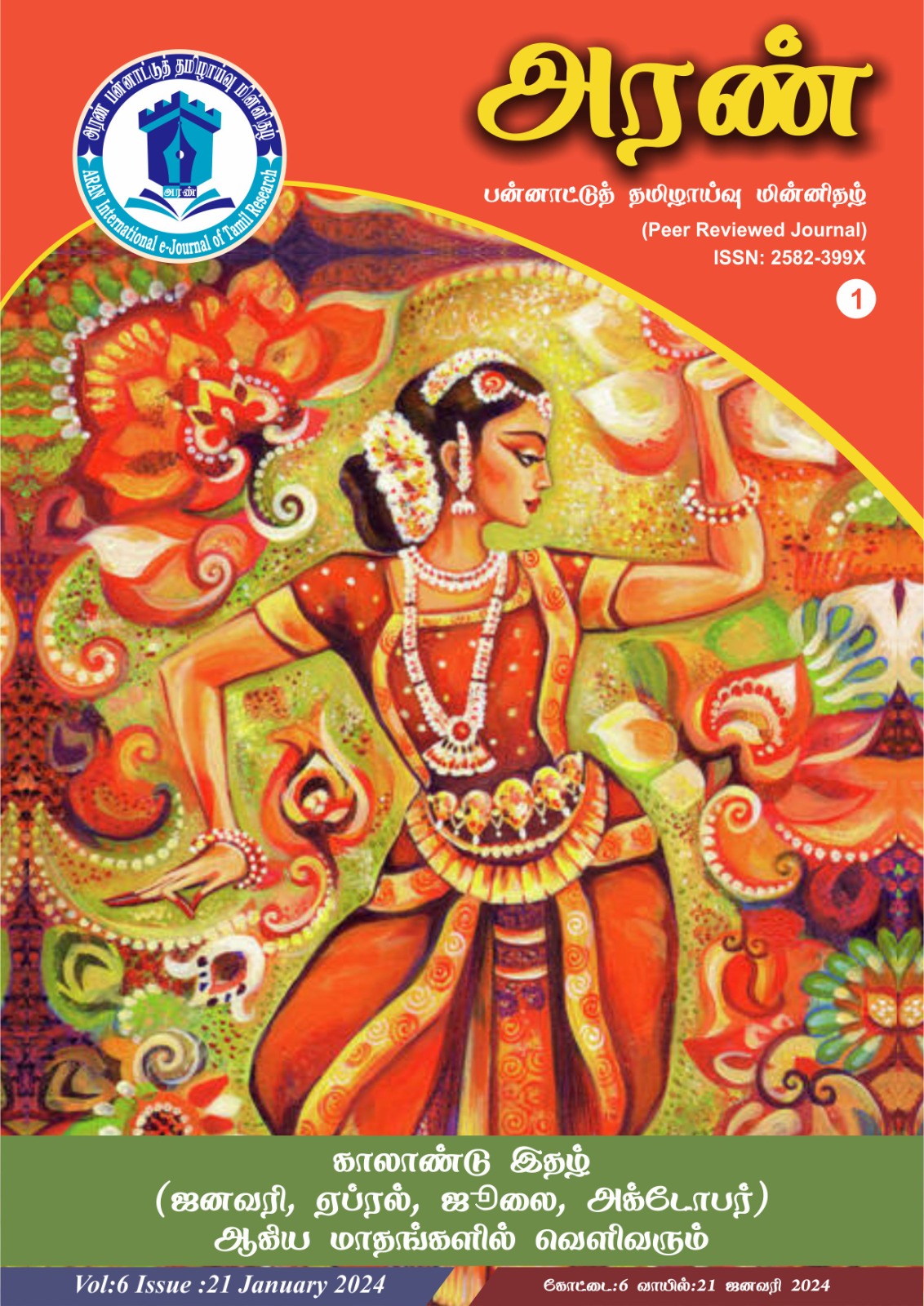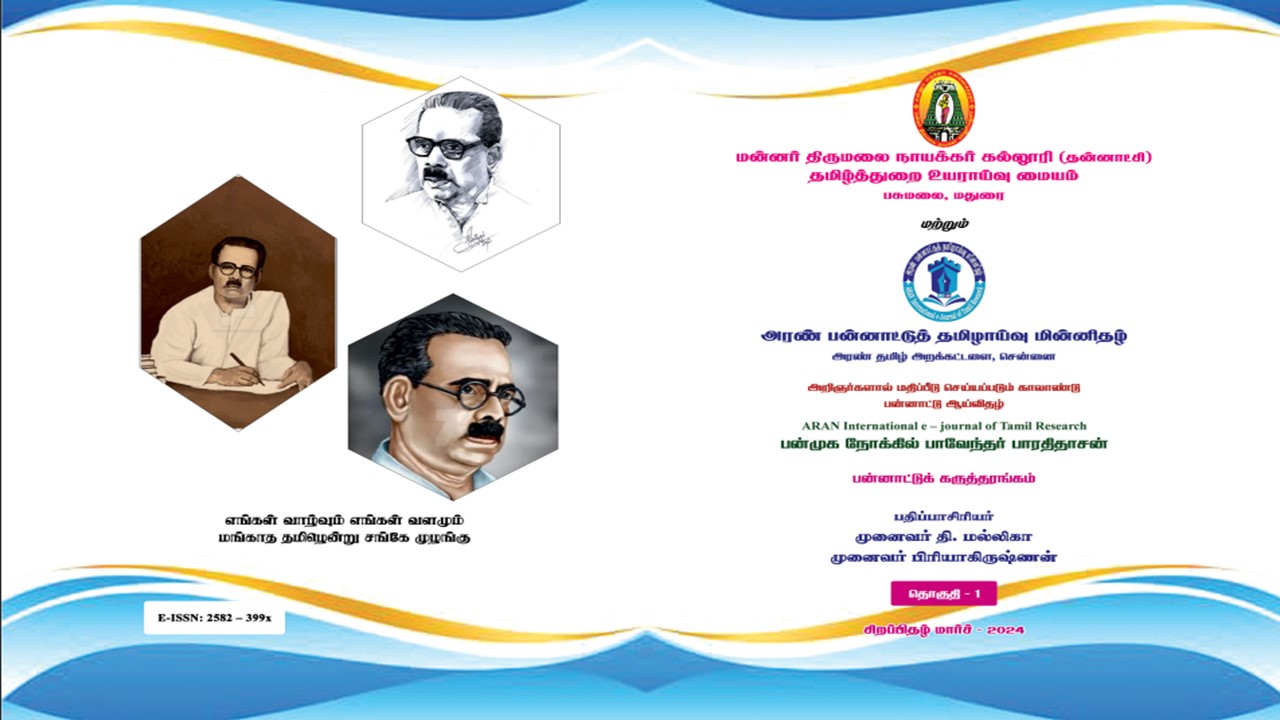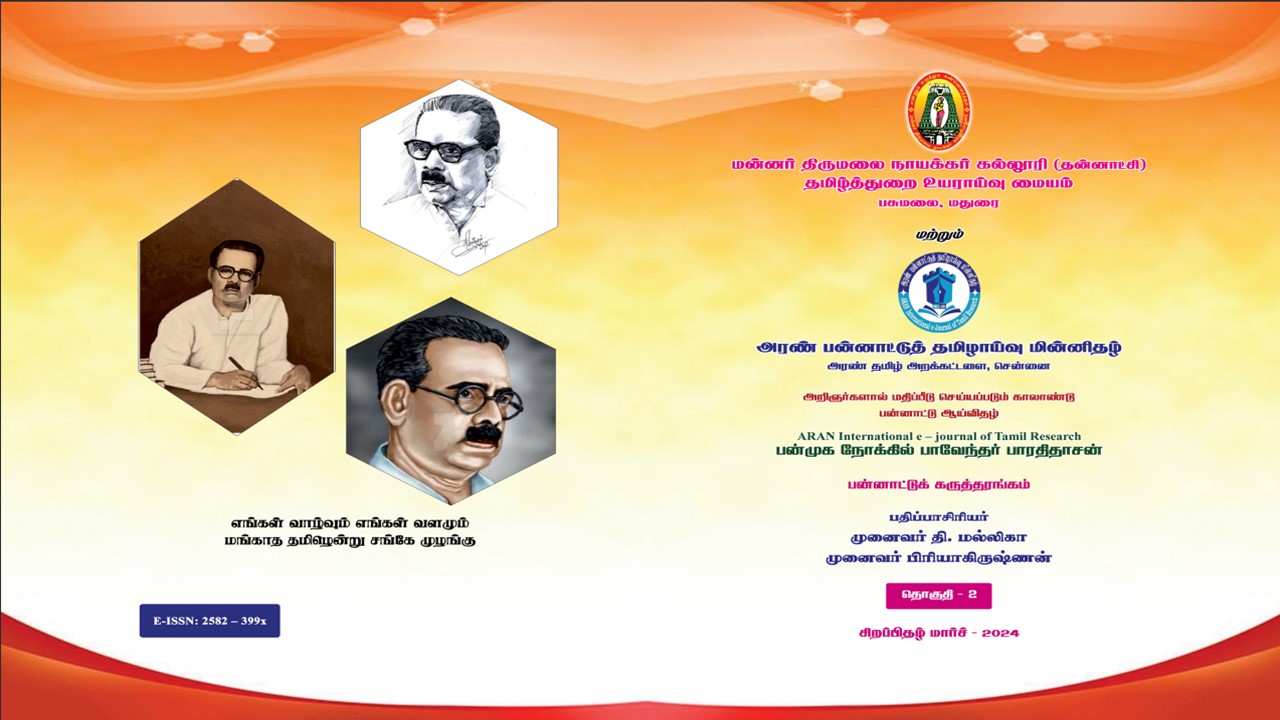Influence of Dance in Ramayana
Abstract
The Ramayanaya is a great Sanskrit epic written by the sage Valmiki in 400 AD. The specialty in this is Valmiki has brought together stories, songs and prays on Rama and Sita. The Ramayana persisted through the oral tradition perhaps as far back as 1,500 B.C. Even though the fourth century B.C. was generally accepted as the date of its composition in Sanskrit by Valmiki. This considered as literature which known as Kavya(poetry) in Sanskrit language.
King Dasharath, the father of Rama who lived in Ayodhya the capital of Kosala kingdom. Who had three wives named Kausalya, Sumitra and Kaikeyi. He was the father for four sons called Ram, Bharat, Laksman and Shatrughna. Ramayana describes the story of Prince Ram, his devoted wife Sita and brother Laksman who were exiled to the forest for 14 years of period. Sita was abducted to Sri Lanka by Ravana, the King of Sri Lanka.
There are seven Kandas (Chapters) in Ramayana Adi kanda or Bal kanda, Ayodhya kanda, Aranya kanda, Kishkindhua kanda, Sundar kanda, Lanka kanda or Yuddha kanda and Uttar kanda. Each chapter describes the particular story of Rama’s life. Not only that, aesthetics has taken important place in social life during that time. Dance and Music influenced the life, customs, tradition, culture and day today life of India and Sri Lanka. Among them, dance had occupied very important place during that time. Dance impact can be seen in Ramayana. Most important kandas which connected with the dance are Ayodhya kanda, Sundar kanda and Kaisiki kanda. We find dance evidence and its establishment during the Ramayana period. Because dance had taken most essential part in every occasion, celebrations and auspicious events as indispensable part in the period of Ramayana.
Key words: Dance, Rama, Sita, Ramayana, Ganika, Nata, Nartaka
Introduction
Ramayana, the great an Indian epic written by sage Valmiki in Treta Yuga (9582 BCE to 5694 BCE). Ramayana consists of 24000 verses in seven chapters (Kandas) and 500 cantos (Sargas).
Rama and Sita story in the Ramayana flows through the seven chapters according to Sage Valmiki’s narration in Sanskrit language. Ramayana was an ancient epic which was deeply rooted with the culture and religious beliefs of ancient India.
The first chapter named as Adi kanda or Bal kanda, describes about the Rama’s childhood, parents, brothers, and marriage. Second chapter Ayodhya kanda, describes about the Rama’s coronation (Rajyabhisheka) and his exile for fourteen years with Sita and Laksmana. Third chapter, Aranya kanda describes about the Rama’s life in Panchavati and his beloved wife Sitha was abducted to Sri Lanka by Ravana, the King of Sri Lanka. Fourth chapter, Kishkindhua kanda describes about the Lord Rama’s journey to Kishkindha and also the friendship with the Hanuman and Sugriva on his battle.
The fifth chapter Sundar kanda, describes about the Hanuman’s journey to Sri Lanka to search on Sita and the battle between Hanuman and Ravana, the demon king of Lanka. The sixth chapter Lanka kanda or Yuddha kanda describes about the war between Lord Rama and Ravana as well as the defeat of Ravana and Sita’s return back to Ayodhya with Rama and Lkshmana, the kingdom of Rama. The seventh chapter Uttar kanda describes about the king Rama of Ayodhya and Sita’s banishment from the Ayodhya kingdom and Sita’s departure back to the earth.
Ayodhya Kingdom and the Importance.
Among seven kandas most important kandas are Ayodhya kanda, Kishkindhua kanda and Sundara kanda. Because we find dance evidences among those three chapters. Dancing was the one of the Arts taught for Both Prince Rama and Ravana. The qualities of Ravana been described with the specific dancing with the physical movements, technique and gestures of him in Sundara kanda. That shows the connectivity which he had for the dance. Not only that Ravana was expert in dance but also playing veena. Lord Shiva blessed with powerful linga to worship and granted invisible sword for his tremendous praise on Lord Shiva.
Important characters in the society
During that period Actors, Professional Dancers and professional musicians popular and highly respected in the society. There were main important three characters called Nata (professional Actor), Nataka (Professional Dancers) and Ganika (professional Courtesan) were highly honored and respected in the society and also without their participation there were no any ceremony conducted. Among them who performed at Rajasabha honored and her presence considered as auspicious. There was huge involvement of divine dancers called Apsaras (mythological characters) who belonged to the heaven (Devaloka) danced and performed both the heaven and earth. Specially they did dance and sang at the “Rajyabhisheka’’ (Coronation) of Rama. The roads of Rama’s kingdom were assigned as 'Natakasala. Even Rama was addressed as ‘’Gandharvaraja’’.
During the arrival of Rama, Sita and Laksmana to Ayodhya from long exile, city was decorated to celebrate with the huge festivity, music and dance.
Celebration of the victory.
On Rama’s return back to the Ayodhya, the people lit diyas äs well to welcome him and celebrated the victory. Apsaras been started to dance themselves at the coronation of Rama.
Moreover, sage Bharadvaja had been entertained Bharatha, Narada had sung for Bharatha, the Apsaras called Misrakeshi, Pundrika and Vamanahad danced for him. Even trees been moved to the rhythm to express the happiness on Rama, Sita and Laksmanan on their arrival back to the Ayodhya. The words Lasya and Nritta has been used for dancing. The whole kingdom was resounding with music and dance as well as city was enraptured.
All the trees in the jungle were danced rhythmically with the wind and animals in the forest were very happily expressed their happiness through the wonderful body movements. In kiskindha kada
Described about the sounds of Music and Dance. And also, every leave of the trees in the forest been danced and even the birds and the animals were accompanied rhythmically at the occasion.
The women of the palace of Lanka been dance and sung till the might night and entertained the king and the ministers.
Also, the performers fallen asleep while keeping instruments in their lap, against their breasts, in their arms had just slumbered off and king Ravana was amidst by them. The gorgeous women with the attractive body features and with beautiful breasts fallen sleep and hugged instrument named Pataha as though hugging a lover, meeting him after long period of separation.
Dance influences
The veena named Vipanci been played and had used the word “Nrityavaditrakusala” for veena. The word Angahara been used for dance. Highly technical word in Natyashastra been used to indicate the postures of queens of Ravana who had fallen sleep. Even the description about the musical instruments had been narrated. Specially five kinds of percussion instruments were mentioned. Lord Shiva was enthralled by the dance and music, that he was awarded a special lordly sword to king Ravana. That sword called as “Chandrahasa” with the meaning of laughter of the moon. As well as King Ravana was adopted by Lord Shiva as one of his foremost devotees. He has performed most difficult and complicated Tandava steps of Lord Shiva who was the creator of the dance. He was great musician and well versed in veena, the string instrument. Furthermore, permanent Musicians and dancers were employed at Ravana’s palace. Music and Dance were established in high esteem during that time. Even Queens of Ravana were Well experts in Dance and Music. There were six types of bhavas used in their dances.
Although the dance was not stylized during that period. It was an Art which has its own verities, differentiations and categories. Dance forms were based on both folk tradition and classical tradition. The specialty here that entire dance forms were based on Tala (beat), Laya (tempo) and kala (speeds). Always music was accompanied with the dance.
Goddess Kali’s dances were performed by the Rakshasis to frighten Sitha during her imprisonment. Dancers and Musicians were highly respected and honored in the society and the courts during that period. They were named in special title “’Ganika”. The basic accompaniments of dance were veena and the mridanga. There were two different types of actors named Nata, the general actors of drama and Nartaka specialized artists in the field. Perfect tala (timing) was the most essential part of dance. Quality of dance was based on laya (tempo).
Research Findings
Dance and music education was compulsory and essential for the members of the king family during that the period of Ramayana. Some of the words found from the Ramayana which connected with the dance. Sailusha, the dancing master of the maidens of the Royal court. Professional Actor was named as Nata. professional Dancer was called in special title as Nartaka. Professional Courtesan was named as Ganika. who were accompanied with the instruments or the rhythm Players were called Pani vadaka. the ladies who accompanied with their singing or the Songstress were called as Gayika during that time.
The physical rhythmic movements which they used to express was called as Nritta (Dancing). Female dance called as Lasya. Process of moving the limbs one place to another was called as Angahara. Nupura and Kinkini were the anklets or salagai which made out of small bells during the dance performance tie around the ancles. Laya was the word used to denote the tempo. there were six types of rasas been used to express the inner feelings trough the dance.
Conclusion
we find that, the dance was established with the respect and high status even in the Ramayana period. Dance has been strongly influenced even in the Ramayana. Dance been acquired the most honorable plce in the society. Dancers were well versed in music too. Dance was influenced and conserved as a part of like in the Ramayana period.
Reference
- The Cultural Heritage of India". The Religions. IV (The Ramakrishna Mission, Institute of Culture).
- R. K. Narayan, The Ramayana, Vision Books, India, 2006.
- Arya, Ravi Prakash Ramayana of Valmiki, Sanskrit Text and English Translation, Parimal Delhi, 1998.
- Harini Gopal swami Srinivasan, Valmiki’s Ramayana, Amar Chitra Katha, Mumbai,2019
- Kirti Pathak, The Ramayana, Om Books International, New Delhi, 2023.
- Om Books Editorial Team, Ramayana, The Sacred Epic of Gods and Demons, Om Books International, New Delhi, 2012.
- Damrosch, David, what is World Literature? Princeton, Princeton University Press, 2003.
- Carroll, Michael Thomas, No Small World Visions and Revisions of World Literature, Illinois, National Council of Teachers of English, 1996.
- G. Ralph, The Ramayan of Valmiki Translated into English Verse, Trubne & Co, London, 2008.
- R.K. Narayan, The Ramayana, Vision Books Pvt Ltd, New Delhi, 1987.
- Richman Paula, Questioning Ramayana, South Asian Tradition, University of California Berkeley, 2001.

